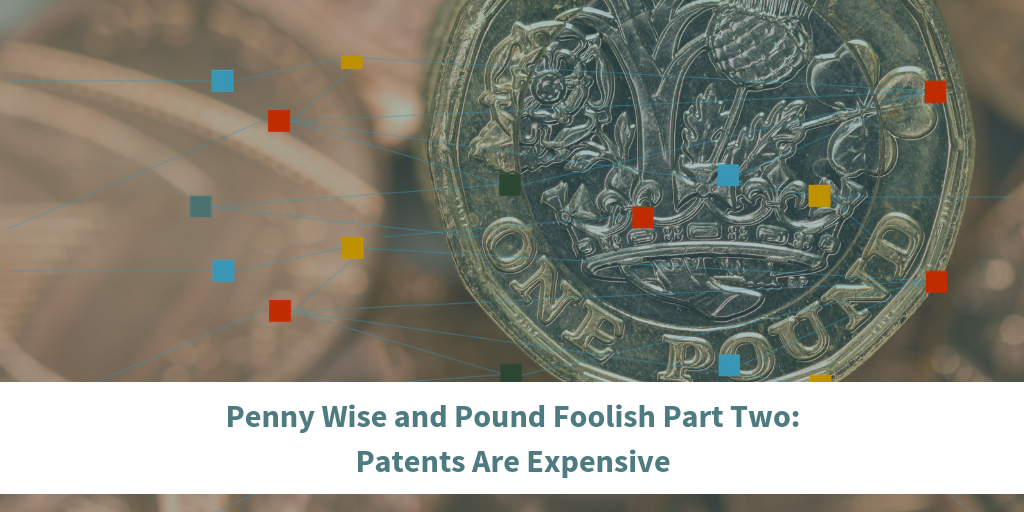
In our last Penny Wise and Pound Foolish article, we investigated corporations that spent years building massive patent portfolios for the purpose of licensing programs. IBM led the way through the nineties, eventually amassing over 22,000 patents within the decade. Of course, with up to $1 billion in revenue each year solely from licensing deals, IBM definitely makes a case for piling up the patents like poker chips.
What they, and many other companies, realized through the portfolio building process is that patents are expensive. Not just acquiring them, but also maintaining them. A 2002 study from the General Accounting Office found the cost for a “small business” to maintain one patent in ten industrialized countries is anywhere from $160,000 to $360,000 over the life of the patent. Medium-sized businesses can spend between $250,000 and $500,000 to maintain a single patent family. Now, adjust for inflation. Staggering, isn’t it?
Encountering Money Waste
Even with a licensing program in place, companies are likely to encounter wasted funds with their patent portfolios. With thousands to track, it’s easy to let a few here and there slip through the cracks and start gathering dust.
Putting a patent program on autopilot may help maintain that intellectual property so that the patents don’t expire and, with them, the rights within them. Those patents that don’t benefit the business and aren’t licensed to others then become a pretty expensive millstone.
The waste that can occur includes:
- Patents that no longer align with corporate strategy
- Patents filed to associate the company with an invention
- Patents no long relevant due to failed technology
- Patents held to avoid risk
With tens of thousands of patents to maintain, how many do you think end up in these categories every year?
Cost Reduction Solution?
As with many other aspects of running a business, outsourcing became the solution for many when it came to acquiring and maintaining patents. Over $2.2 billion was spent each year outsourcing patent writing to India, with fixed fees paid to law firms.
Seems smart, doesn’t it? Outsourcing is often a great way to save money, and fixed fees have all but revolutionized several other industries, including real estate. The only problem is, it’s in direct violation of Export Administration Regulations. Well, that’s not the only problem, but it’s the biggest one.
For those companies that pushed through outsourcing their patent applications to India for fixed fees, they certainly managed to knock out a whole lot of patent applications in a short amount of time. But at what cost? And obviously, we don’t mean a monetary cost, at least not at the outset.
There’s a good reason for the phrase, “You get what you pay for.” Next time, we’ll explore the various issues that have arisen from outsourcing—starting with quality. But you probably already knew where this was going…
Download the full ebook below.



